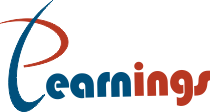
If you’re new to the digital marketing world, words like landing pages, organic results, and paid search traffic might sound a little overwhelming. It’s important to have a basic understanding of what these things are if you want to build a successful platform for potential customers online.
The first thing to note is that a landing page isn’t necessarily your home page. When you use a search engine like Google, you type in a keyword or phrase relevant to the information you’re looking for. When you hit search, different categories of results come up. The top results are going to be paid search results/Google Ad words.
The next three categories of results are going to be paid search results/Google Shopping ads, Google’s featured results, and organic results respectively. The last category, organic results, is where you should find your website as long as it’s optimized to match the keywords that the searcher input into the query.
A landing page is different from your website’s homepage in the fact that it’s the page where the searcher “lands” when they use one of the top category results like a Google Ad. In order for this to be an option, you would have to pay for that top result position.
Part of the payment includes the option to choose what page the searcher is brought to when clicking on the ad. Instead of automatically bringing them to your homepage, it can bring them to a page that’s offering a promotion or advertising a campaign.
Your landing page design is key to its success. For this reason, professional SEO firms or consultants like Jimmy Huh can help with conversion optimization, which includes the designing and organization of landing pages. Whereas your homepage has many links to other pages or useful sources, the landing page should have only a few if not only one.
This makes the navigation of the landing page extremely intuitive and almost forces the visitor to click to where you want them to go. While having many links on your homepage can be resourceful, they serve as distractions on your landing page.
There are also different types of landing pages for hitting various objectives. The two main types of landing pages include lead generating landing pages and click-through landing pages. The main difference is that the lead generating landing page utilizes a call to action, meaning it wants the visitor to input their data.
The click-through page, on the other hand, doesn’t call for data input but rather has one link that serves as its call to action.
Part of updating your landing pages is measuring the leads that it generates. By doing this you can edit and adjust in attempt to maximize the data collected and the leads converted.
If you’re new to the digital marketing world, words like landing pages, organic results, and paid search traffic might sound a little overwhelming. It’s important to have a basic understanding of what these things are if you want to build a successful platform for potential customers online.
The first thing to note is that a landing page isn’t necessarily your home page. When you use a search engine like Google, you type in a keyword or phrase relevant to the information you’re looking for. When you hit search, different categories of results come up.
The top results are going to be paid search results/Google Ad words. The next three categories of results are going to be paid search results/Google Shopping ads, Google’s featured results, and organic results respectively. The last category, organic results, is where you should find your website as long as it’s optimized to match the keywords that the searcher input into the query.
A landing page is different from your website’s homepage in the fact that it’s the page where the searcher “lands” when they use one of the top category results like a Google Ad. In order for this to be an option, you would have to pay for that top result position.
Part of the payment includes the option to choose what page the searcher is brought to when clicking on the ad. Instead of automatically bringing them to your homepage, it can bring them to a page that’s offering a promotion or advertising a campaign.
Your landing page design is key to its success. For this reason, professional SEO firms or consultants like Jimmy Huh can help with conversion optimization, which includes the designing and organization of landing pages. Whereas your homepage has many links to other pages or useful sources, the landing page should have only a few if not only one.
This makes the navigation of the landing page extremely intuitive and almost forces the visitor to click to where you want them to go. While having many links on your homepage can be resourceful, they serve as distractions on your landing page.
There are also different types of landing pages for hitting various objectives. The two main types of landing pages include lead generating landing pages and click-through landing pages. The main difference is that the lead generating landing page utilizes a call to action, meaning it wants the visitor to input their data. The click-through page, on the other hand, doesn’t call for data input but rather has one link that serves as its call to action.
Part of updating your landing pages is measuring the leads that it generates. By doing this you can edit and adjust in attempt to maximize the data collected and the leads converted.
